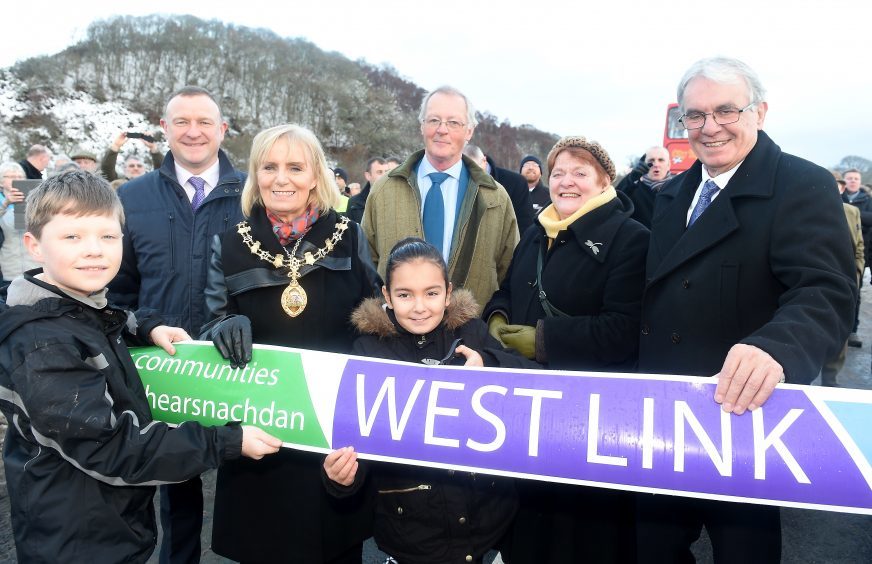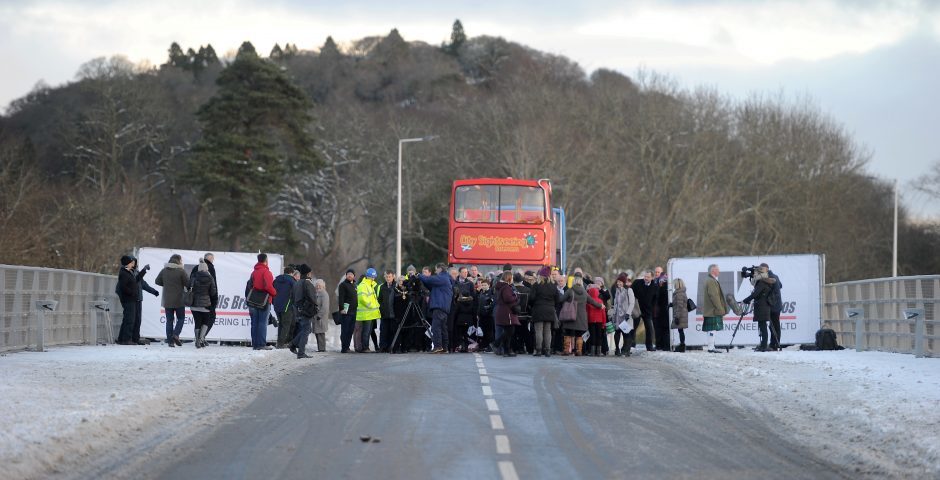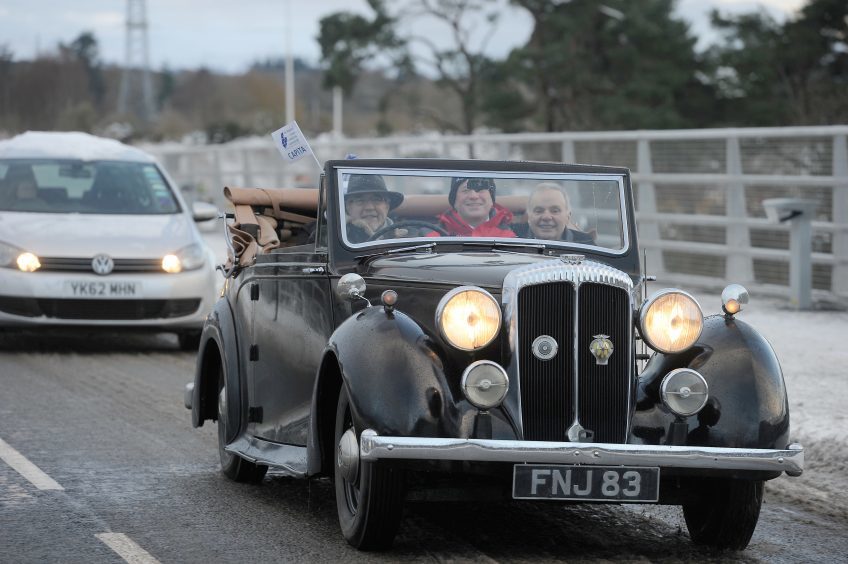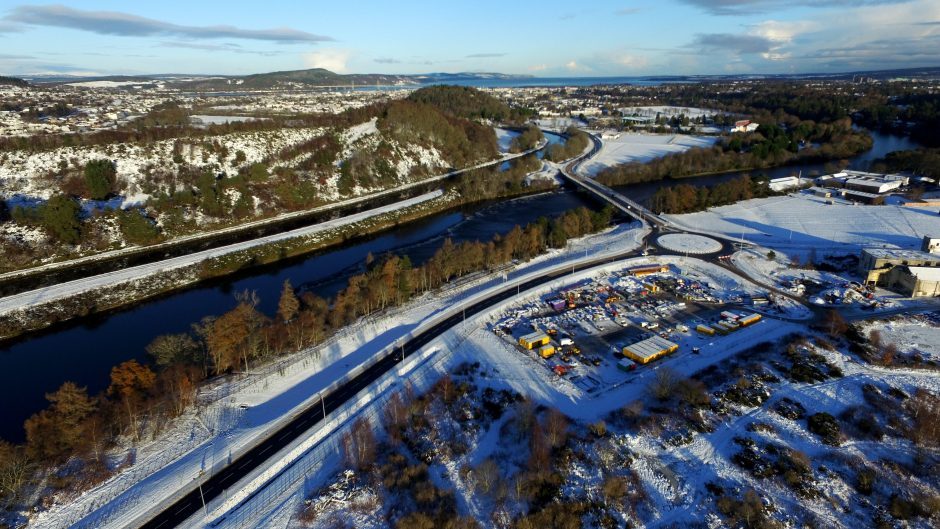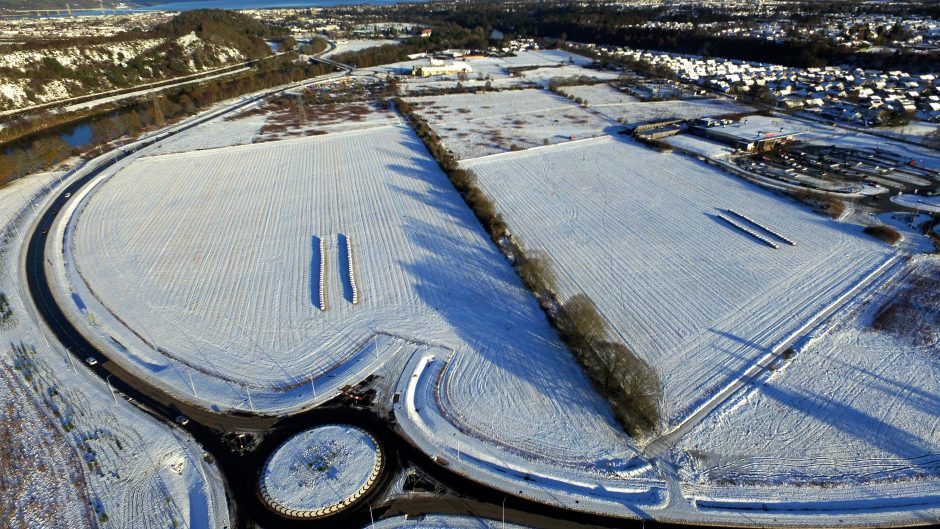The £55m West Link bypass in Inverness was officially opened yesterday by city Provost Helen Carmichael and two local primary school children.
The ribbon to the long-awaited development was cut at 9.49am by Kinmylies and Holm P7 pupils Kelsey Campbell and Roddy Maclennan, who is the son of the project’s chief engineer, Iain.
It is the biggest infrastructure project of its kind in the city since the Inverness Flood Alleviation Scheme protected around 800 homes along the bank of the river Ness.
Highland Council Leader Margaret Davidson is convinced the new distributor road, which links the A82 and the Dores Road, will be a financial boost to the city.
She said: “It is key to unlocking many things – economic development, new housing, outdoor access – in an ordered, safe way.
“Look at the end product. We have not devastated the green space in Inverness, we have enhanced it. There will be access to the river which we have never had before.”
Councillor Allan Henderson, chairman of the environment, development and infrastructure committee, noted the project was first mooted half a century ago.
Welcoming the completion of phase one, he said: “Now at long last, after many decades, the West Link is now a reality – delivered on time, and on budget.”
He added: “The benefit to cost ratio of the West Link project represents nearly £4 of benefit for every £1 of public investment.”
The scheme aims to provide easy A9/A82 access, reducing journey times in the south of the city when travelling from one side of the River Ness to the other.
Mr Henderson added: “The route will therefore significantly reduce congestion and pollution in the city centre.”
Colin Howell, the council’s head of infrastructure, agreed that the new route’s practicality was likely to win many friends.
He stated: “I think, as soon as the road opens, that people will realise we should have had this donkey’s years ago.
“What with the road, the infrastructure foot path and the cycling way, it will be a real benefit for the people of inverness.”
It was also a special day for those making their initial trips across the bridge, including Sandra Wilson, 77, who was one of the first across the Ness Bridge in 1960.
Mrs Wilson currently lives near the new West Link and is supportive of the development.
She said: “I think it is great, it will really help with the traffic in Inverness.
“It will be good for the young ones as they will be able to reach the sports areas a lot easier now.”
Plans for the West Link date back to the late 1960s and have been revisited and resurrected in almost every subsequent decade.
The £55million project forms part of the Inverness and Highland City Region deal, a joint initiative supported by a £315million investment.
That cash comes from the UK and Scottish governments, Highland Council, Highlands and Islands Enterprise, and the University of the Highlands and Islands.
THE TIMELINE
Plans for an Inverness bypass were first touted half a century ago.
- Late 1960s: Jamieson and Mackay Consultants identified the need and advantage of such a route.
- 1973: Malcolm McCall, chartered civil engineer with Inverness County Council, wrote a report on proposals for a southern distributor.
- 1974: Inverness County Council endorsed the principle of such a route.
- 1975: The Inverness plan was published to explain the land-use strategy that would fit the route, calling for a distributor road that would allow Inverness to develop.
- 1980s/90s: Expansion of routes that make up the southern distributor discussed further.
- December 2010: First public consultation- a series of public meetings and exhibitions were held in the city.
- November/December 2011: Second public consultation.
- March 2012: Highland Council accepts a fixed link across the River Ness and the Caledonian Canal. Estimated cost is £27.2 million.
- August 2012: Route developed for Consultation. Capita Symonds Appointed to develop proposals.
- April 2013: Third public consultation, part of Major Project Pre-application Process.
- September 2013: Cost rises to £34.39million.
- December 2014: start of the planning process for the enhancements to the Highland Rugby Club.
- February 2015: Highland Council confirms the cost of the project would now rise from £36.6m to £43.3m, taking inflation into account.
- April 2015: Detailed planning application for the Canal Parks Enhancement Project submitted.
- August 2015: Full planning permission was granted, including the Canal Parks Enhancement Project.
- September 2015: Construction begins on the bridge across the River Ness.
- May 3, 2016: Construction begins on the West Link road.
- September 2017: First foot traffic crosses the bridge, which was named the Holm Mills Bridge by a public vote
- December 10, 2017: The West Link is officially opened, with a final cost put at £55m.
